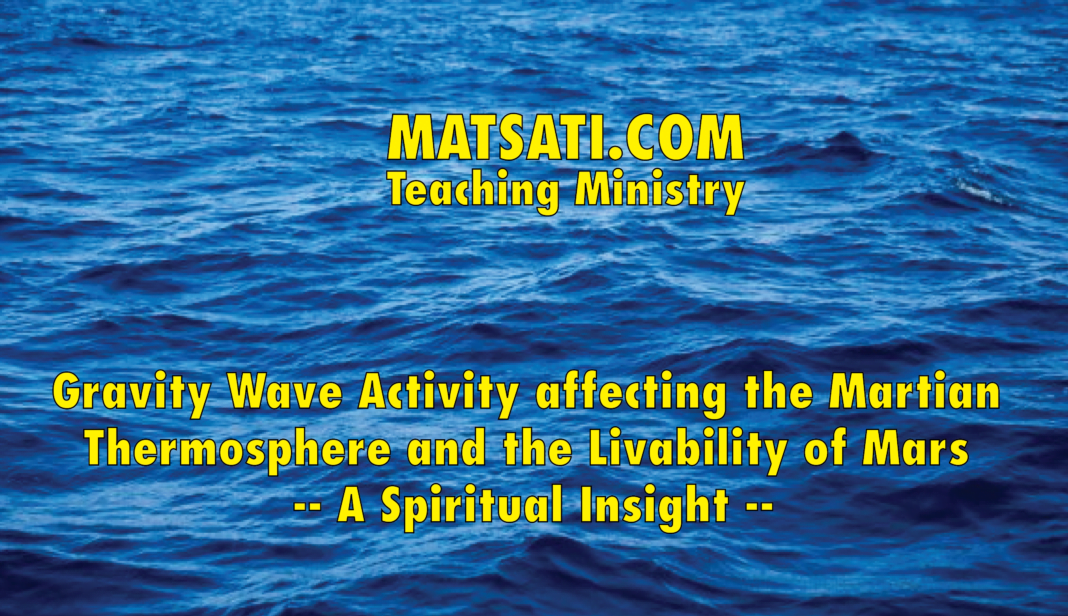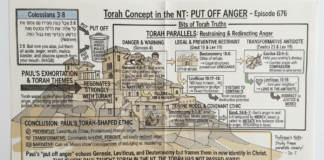Recently Scientists published a paper in the Journal of Geophysical Research Letters [1] describing how Low atmospheric global dust storms affect both the weather and variability of the whole Martian Atmosphere. The data for this was obtained by analyzing the CO2 density in the atmosphere using the Neutral gas and Ion Mass Spectrometry (NGIMS). The MAVEN spacecraft was able to measure the gravity wave density fluctuations in the atmosphere during a 2018 dust storm showing latitude and local time variability. The conclusions are thermospheric gravity wave activity increased by 2X during the dust storm. These also affect the thermal fluctuations in the atmosphere which can facilitate atmospheric escape of molecules, answering the question why Mars’ atmosphere is so thin.
References
- Erdal Yiğit, Alexander S. Medvedev, Mehdi Benna, Bruce M. Jakosky, “Dust storm‐enhanced gravity wave activity in the Martian thermosphere observed by MAVEN and implication for atmospheric escape,” Geophysical Research Letters, First published: 02 February 2021, https://doi.org/10.1029/2020GL092095
As everyone knows, Mars is home to some very nasty dust storms and these dust storms can occur globally. This may cause significant problems for those who want to settle the Martian surface. The issues are these dust storms can last for months at a time on the planet’s surface making solar panels basically ineffective. This means that settlers would face a significant challenge, as they would need to remain in place for months at a time so as to wait the storm out with very little advanced warning. This does not bode well for the human exploration of Mars. The gravity waves leading to the escape of the planet’s atmosphere is also problematic for long term settlements and especially for the scifi idea of geoengineering the planet for life.
Now something to note, “gravity waves” sounds similar but have an entirely different meaning to what is known as “gravitational waves.” In fluid dynamics, “gravity waves” are waves generated in a fluid medium or at the interface between two media when the force of gravity or buoyancy tries to restore equilibrium. An example of such an interface is that between the atmosphere and the ocean, which gives rise to wind waves. A gravity wave results when fluid is displaced from a position of equilibrium. The restoration of the fluid to equilibrium will produce a movement of the fluid back and forth, called a wave orbit. Gravity waves on the air-sea interface of the ocean are called surface gravity waves or surface waves, while gravity waves that are within the body of the water (such as between parts of different densities) are called internal waves. Wind-generated waves on the water surface are examples of gravity waves, as are tsunamis and ocean tides. On the other hand, “gravitational waves” are disturbances in the curvature of spacetime, generated by accelerated masses, that propagate as waves outward from their source at the speed of light. They were proposed by Henri Poincaré in 1905 and subsequently predicted in 1916 by Albert Einstein on the basis of his general theory of relativity. Gravitational waves transport energy as gravitational radiation, a form of radiant energy similar to electromagnetic radiation. Newton’s law of universal gravitation, part of classical mechanics, does not provide for their existence, since that law is predicated on the assumption that physical interactions propagate instantaneously (at infinite speed) – showing one of the ways the methods of classical physics break down for explaining phenomena associated with relativity. The research paper is discussing a common phenomenon in fluid dynamics!
We often hear of scientists saying that in the past Mars had both a wet and hospitable world. Note previous article (The Electric Currents around Mars are Fundamental to Atmospheric Loss – A Spiritual Insight – MATSATI.COM Teaching Ministry) and video (Watch – The Electric Currents around Mars are Fundamental to Atmospheric Loss – A Spiritual Insight – MATSATI.COM Teaching Ministry) that discuss how Mars has no magnetic field to shield the planet from cosmic rays and from the harmful radiation from the sun leading to atmospheric losses and great dangers to humans on Mars. These results suggest atmospheric loss has occurred since Mar’s creation and shows the planet is a dry and hostile environment. What this research paper explains is how gravity waves are an important factor in the dynamic thermodynamic coupling of the various atmospheric layers. We can compare these to what we know based upon our observations here on Earth. On Mars, researchers study the global dust storms and its effect on the thermospheric gravity wave activity and the connection to this fluid dynamics phenomenon (gravity waves) to the escape of molecules from the atmosphere. The gravity wave was measured by the mars rover Ion Mass Spectrometer indicated by the CO2 density fluctuations with time. It was the larger amplitude density fluctuations (and corresponding gravity waves) that is believed to help facilitate the atmosphere escape.
The Spiritual Insights that we receive from this type of research is related to how gravity waves influence atmospheric escape, which draws a parallel to how the Torah influences our lives. Jewish tradition sees the Torah as being a rich treasure not only for guidance for our lives in “sacred living” but also to help answer deep questions about who we are, why we are here, and how to have a relationship with God! The Torah establishes the foundation stones for all of Scripture, and contains great meaning within the subtler messages (רמז, remez) or hints of spiritual truths. The point is the influence of the Torah on our lives also depends upon our current condition in which we find ourselves also known as “the eye of the beholder” (עינו של המתבונן). This means that the Lord God in heaven can speak to our hearts in a different way than our neighbor as speaking spiritual truth that helps bring healing and spiritual riches into our lives for any given moment and situation. The most significant aspect of Torah is how it provides very practical applications for our faith and helps one to become aware of the yetzer hara (evil inclination) and the dangers of giving into our evil inclinations.
The Torah to many people refer specifically to the scroll of the Torah which contains the five books of Moshe (Bereshit / Genesis, Shemot / Exodus, Vayikra / Leviticus, Bamidbar / Numbers, and Devarim / Deuteronomy). However, Jews commonly speak of Torah in its broader sense of “Teaching.” This then causes all of Scripture such as the Nakh (ת-נך, Prophets and Writings) sections of the Scriptures as being under the umbrella of “Torah.” Because of the root meaning of the word Torah as “instruction,” then Torah study involves reading, studying, and reflecting upon all of the Biblical passages.
What the scientific research draws out for us is in relation to these gravity waves is the phenomenon that leads to non-equilibrium fluid dynamics, and the idea that the system always wants to return to equilibrium. When our lives go “awry” (away from the appropriate planned expectation for our lives) we have a non-equilibrium situation that takes place and we become uncertain as to what will happen and how God will work things out for good? We have many Torah examples for such situations like this, such as in the case of Jacob running from his brother Esau according to Parashat Vayetze in Bereshit / Genesis 28:10-22. Let’s have a closer look at the Scriptures.
פרשת ויצא
ספר בראשית פרק כח
י וַיֵּצֵא יַעֲקֹב מִבְּאֵר שָׁבַע וַיֵּלֶךְ חָרָנָה: יא וַיִּפְגַּע בַּמָּקוֹם וַיָּלֶן שָׁם כִּי-בָא הַשֶּׁמֶשׁ וַיִּקַּח מֵאַבְנֵי הַמָּקוֹם וַיָּשֶֹם מְרַאֲשֹׁתָיו וַיִּשְׁכַּב בַּמָּקוֹם הַהוּא: יב וַיַּחֲלֹם וְהִנֵּה סֻלָּם מֻצָּב אַרְצָה וְרֹאשׁוֹ מַגִּיעַ הַשָּׁמָיְמָה וְהִנֵּה מַלְאֲכֵי אֱלֹהִים עֹלִים וְיֹרְדִים בּוֹ: יג וְהִנֵּה יְהֹוָה נִצָּב עָלָיו וַיֹּאמַר אֲנִי יְהֹוָה אֱלֹהֵי אַבְרָהָם אָבִיךָ וֵאלֹהֵי יִצְחָק הָאָרֶץ אֲשֶׁר אַתָּה שֹׁכֵב עָלֶיהָ לְךָ אֶתְּנֶנָּה וּלְזַרְעֶךָ: יד וְהָיָה זַרְעֲךָ כַּעֲפַר הָאָרֶץ וּפָרַצְתָּ יָמָּה וָקֵדְמָה וְצָפֹנָה וָנֶגְבָּה וְנִבְרְכוּ בְךָ כָּל-מִשְׁפְּחֹת הָאֲדָמָה וּבְזַרְעֶךָ: טו וְהִנֵּה אָנֹכִי עִמָּךְ וּשְׁמַרְתִּיךָ בְּכֹל אֲשֶׁר-תֵּלֵךְ וַהֲשִׁבֹתִיךָ אֶל-הָאֲדָמָה הַזֹּאת כִּי לֹא אֶעֱזָבְךָ עַד אֲשֶׁר אִם-עָשִֹיתִי אֵת אֲשֶׁר-דִּבַּרְתִּי לָךְ: טז וַיִּיקַץ יַעֲקֹב מִשְּׁנָתוֹ וַיֹּאמֶר אָכֵן יֵשׁ יְהֹוָה בַּמָּקוֹם הַזֶּה וְאָנֹכִי לֹא יָדָעְתִּי: יז וַיִּירָא וַיֹּאמַר מַה-נּוֹרָא הַמָּקוֹם הַזֶּה אֵין זֶה כִּי אִם-בֵּית אֱלֹהִים וְזֶה שַׁעַר הַשָּׁמָיִם: יח וַיַּשְׁכֵּם יַעֲקֹב בַּבֹּקֶר וַיִּקַּח אֶת-הָאֶבֶן אֲשֶׁר-שָֹם מְרַאֲשֹׁתָיו וַיָּשֶֹם אֹתָהּ מַצֵּבָה וַיִּצֹק שֶׁמֶן עַל-רֹאשָׁהּ: יט וַיִּקְרָא אֶת-שֵׁם-הַמָּקוֹם הַהוּא בֵּית-אֵל וְאוּלָם לוּז שֵׁם-הָעִיר לָרִאשֹׁנָה: כ וַיִּדַּר יַעֲקֹב נֶדֶר לֵאמֹר אִם-יִהְיֶה אֱלֹהִים עִמָּדִי וּשְׁמָרַנִי בַּדֶּרֶךְ הַזֶּה אֲשֶׁר אָנֹכִי הוֹלֵךְ וְנָתַן-לִי לֶחֶם לֶאֱכֹל וּבֶגֶד לִלְבֹּשׁ: כא וְשַׁבְתִּי בְשָׁלוֹם אֶל-בֵּית אָבִי וְהָיָה יְהוָֹה לִי לֵאלֹהִים: כב וְהָאֶבֶן הַזֹּאת אֲשֶׁר-שַֹמְתִּי מַצֵּבָה יִהְיֶה בֵּית אֱלֹהִים וְכֹל אֲשֶׁר תִּתֶּן-לִי עַשֵּׂר אֲעַשְּׂרֶנּוּ לָךְ:
Bereshit / Genesis 28:10-22
28:10 Then Jacob departed from Beersheba and went toward Haran. 28:11 He came to a certain place and spent the night there, because the sun had set; and he took one of the stones of the place and put it under his head, and lay down in that place. 28:12 He had a dream, and behold, a ladder was set on the earth with its top reaching to heaven; and behold, the angels of God were ascending and descending on it. 28:13 And behold, the Lord stood above it and said, ‘I am the Lord, the God of your father Abraham and the God of Isaac; the land on which you lie, I will give it to you and to your descendants. 28:14 ‘Your descendants will also be like the dust of the earth, and you will spread out to the west and to the east and to the north and to the south; and in you and in your descendants shall all the families of the earth be blessed. 28:15 ‘Behold, I am with you and will keep you wherever you go, and will bring you back to this land; for I will not leave you until I have done what I have promised you.’ 28:16 Then Jacob awoke from his sleep and said, ‘Surely the Lord is in this place, and I did not know it.’ 28:17 He was afraid and said, ‘How awesome is this place! This is none other than the house of God, and this is the gate of heaven.’ 28:18 So Jacob rose early in the morning, and took the stone that he had put under his head and set it up as a pillar and poured oil on its top. 28:19 He called the name of that place Bethel; however, previously the name of the city had been Luz. 28:20 Then Jacob made a vow, saying, ‘If God will be with me and will keep me on this journey that I take, and will give me food to eat and garments to wear, 28:21 and I return to my father’s house in safety, then the Lord will be my God. 28:22 ‘This stone, which I have set up as a pillar, will be God’s house, and of all that You give me I will surely give a tenth to You.’ (NASB)
Something we note about Torah study, in this historical lesson that we receive is that God is faithful to keep His promises even when people fail. Also, the Lord will be with us no matter our circumstance, even when we do not know what will happen. Even in the midst of our greatest troubles, God’s promises remain! Here Jacob fled from his brother not knowing what was going to happen with his life, and the Lord God Almighty spoke to him making him a promise that He would be with Him wherever he goes. The point is when our lives go awry, falling out of equilibrium into a non-steady state situation, the Lord tells Jacob that He will be with him and bring him back to equilibrium in the sense of returning to the Land Promised to his fathers.
The significance of Torah study, coupled to the Apostolic Writings and the Rabbinic literature, there are many spiritual insights that we may glean from the pages of Scripture which can help to bring our lives back into equilibrium as having a relationship with God and receiving forgiveness of sins. In the example Jacob’s dream, there may be something more to that dream than meets the eye. In the rabbinic literature, the Midrashic approach to Jacob’s dream according to Midrash Rabbah on Bereshit / Genesis 68:13 states, “Rising and descending on it, that rise and descend with a sheep. And behold God is standing on it, (Amos 9): I have seen God standing on the altar. The rabbis interpret it as Sinai: He dreamed and behold there was a ladder, that is Sinai. Resting on the ground, (Exodus 19) and they stood at the bottom of the mountain. And its head reached the heavens, (Deuteronomy 4) And the mountain burned with fire unto the heart of heavens…” Here the rabbis draw a connection to the revelation of God at the Mountain of Sinai. The word סֻלָּם, ladder, is equated with סיני, Mount Sinai (see Ibn Ezra on Bereshit / Genesis 28:12 Part 1). The connection is made using the gematria as both words are numerically equal (130, Daat Zkenim on Bereshit / Genesis 28:12 Part 1). The rabbis describe these things as being related to the people of Israel standing at the mountain of Sinai with Moshe to receive the Torah. The parallel is in Moshe and Aaron acting as God’s messengers on earth, whereas the angels of God ascending and descending are analogous to Moshe and Aaron ascending and descending Sinai, as God’s messengers on earth. Other Midrashic descriptions of Jacob’s dream say that Jacob’s likeness was engraved upon God’s throne. Ibn Ezra goes on to say in his commentary on Bereshit / Genesis 28:12 Part 2 saying, “And Rabbi Shlomo HaSefardi said that ‘ladder’ hints at the highest soul and ‘G-d’s angels’ hints at wise thoughts.” In addition to this, Ibn Ezra also states in Part 3, “Rabbi Joshua said that the reason for the ladder is that his (Jacob’s) prayer rose on it and his salvation from the heavens came down on it…” He is basically saying that prayer goes up to heaven by way of the ladder, and salvation comes down by way of the ladder. It is interesting how the rabbis use this illustration of the ladder as representing all of these things, Sinai, the giving of the Torah, prayer ascending, the salvation of God descending from the heavens, etc. Ibn Ezra says in Part 4 of his commentary, “the ladder here is a metaphor, for nothing is concealed from God. Worldly things hang onto the heavens as though there is a ladder between them, upon which the angels go up to report on things after they have been walking along the earth. Likewise, it is written that other angels descend to fulfill G-d’s tasks, like a king with his servants.” Based upon the rabbinic literature, the vision of the ladder Jacob saw encompasses all of these symbolic meanings, i.e. the messengers of God, the angels of God ascending and descending, and prayer ascending while the salvation of God descended upon Jacob by way of the ladder, and how all things are revealed from God (i.e. nothing is concealed from God), and how the angels descend to fulfill God’s tasks and then ascend to report to the Lord what is happening.
It is interesting to observe while studying the Apostolic Writings (NT) that Yeshua uses this analogy concerning himself. Thus, if we couple what we know from the Torah and the Rabbis to what Yeshua says according to John chapter 1, there is an interesting insight into who Yeshua is as the Messiah of God.
John 1:48-51
1:48 Nathanael said to Him, ‘How do You know me?’ Jesus answered and said to him, ‘Before Philip called you, when you were under the fig tree, I saw you.’ 1:49 Nathanael answered Him, ‘Rabbi, You are the Son of God; You are the King of Israel.’ 1:50 Jesus answered and said to him, ‘Because I said to you that I saw you under the fig tree, do you believe? You will see greater things than these.’ 1:51 And He said to him, ‘Truly, truly, I say to you, you will see the heavens opened and the angels of God ascending and descending on the Son of Man.’ (NASB)
Here in John 1:51, Yeshua makes an application of Jacob’s dream to himself as being that ladder, and to Jacob fleeing from Esau we find the context of the son of man having no place to lay his head similar to Jacob’s situation when he was fleeing his brother and having to sleep with a rock as his pillow. The interesting parallel to the Torah text finds all of these things to be true in the Messiah Yeshua! These things reveal to us how the rabbinic literature provides a rich contextual background on the messianic identity of the Son of Man as the messenger of God being paralleled to Moshe bringing salvation to the entire nation of Israel. In addition, this analogy of the ladder also connects Yeshua as being a communication conduit to God our Father in heaven.
We had stated earlier what the scientific research is drawing out for us is in relation to the mass spectrometric measured data of CO2 gravity waves which lead to non-equilibrium fluid dynamics in the atmosphere of the Martian surface. The concept of non-equilibrium fluid dynamics causes us to consider when our lives go “awry” (away from the appropriate planned expectation of what should happen) we find ourselves in an non-equilibrium situation, and so we seek the Lord God to help all things to work out for good. In the Torah we see that God is in control of all things. God wanted the promise He had made to Abraham to pass down to Jacob and the text states that is exactly what had happened! These things reveal to us no matter how unstable our lives may become, God is in control and we can trust in Him to bring His plans to pass. When Jacob woke up, he was amazed at the things God had said. He turned the stone that was under his head up on its side to be a pillar. He named the place Bethel, which means “house of God.” Then Jacob made a vow to the Lord. Throughout the history of Israel, we see this gravity wave type of fluctuations in the sense of walking away from the Lord and returning to the Lord, etc. These things are related to when one relies upon God as opposed to relying upon one’s own self. From all of the triumphs and failures that we see in the Scriptures, we learn that when we abide with God in the Messiah Yeshua we will have peace and as the Torah says, things will go well with us! When a person takes matters into his or her own hands, sin is close to follow including sins consequences. Above all else, we learn how great God is in His lovingkindness (grace) to keep us, He is faithful to keep His promises, even when we fail!









